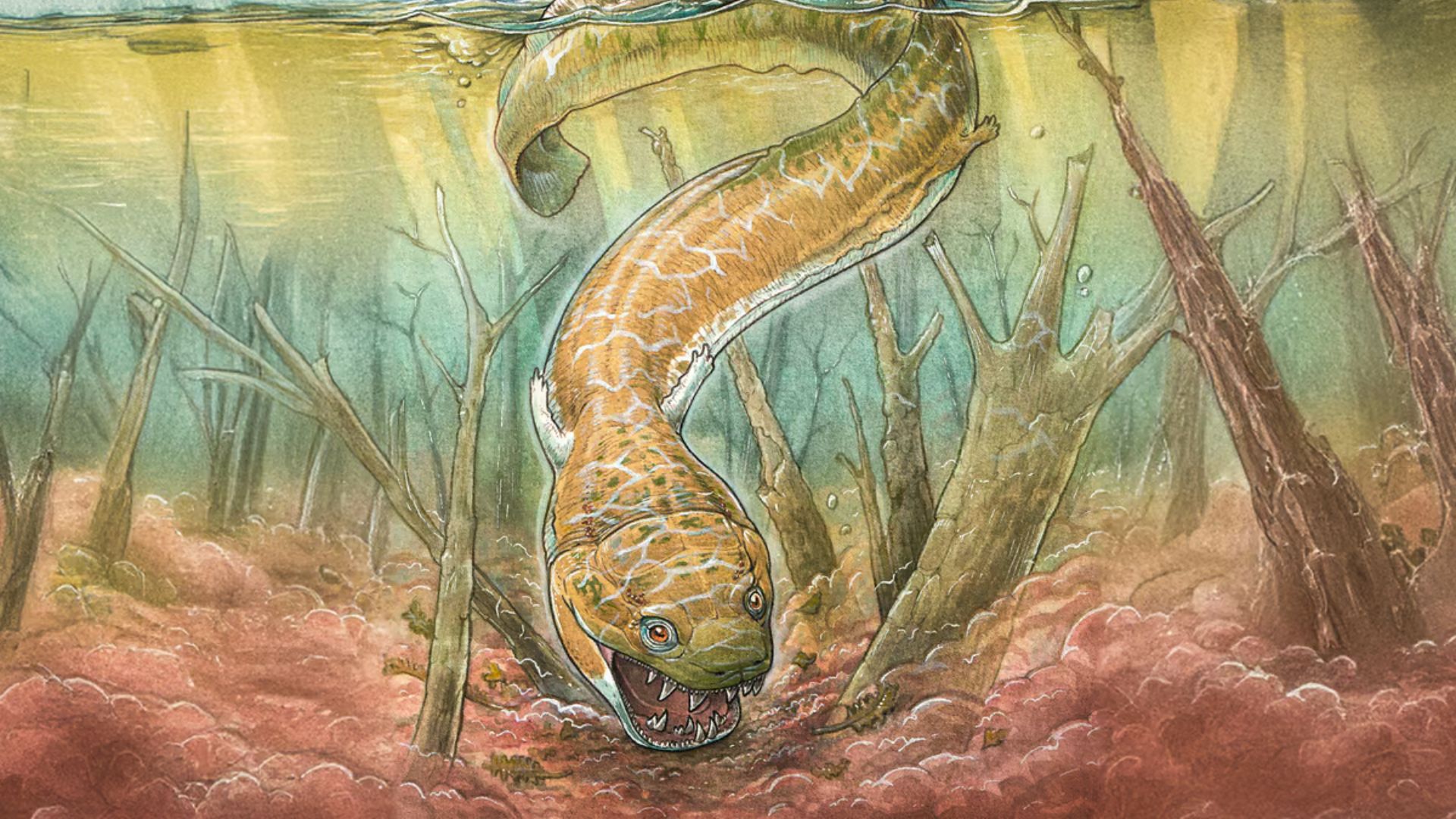Long before dinosaurs dominated the Earth, another formidable predator reigned supreme in its environment. Meet Gaiasia, a colossal creature resembling a salamander that prowled the Permian swamps.
If you’re envisioning a small, cute axolotl, Gaiasia jennyae was far from it. This ancient amphibian measured approximately 2.5 meters (8.2 feet) in length and boasted a skull and jaw structure capable of capturing large prey.
“Gaiasia jennyae was much larger than a human, likely inhabiting the bottom of swamps and lakes,” explained Jason Pardo, co-lead author of the study. “Its large, flat head, reminiscent of a toilet seat, allowed it to open its mouth wide to engulf prey. It possessed enormous fangs, with its entire front jaw dominated by massive teeth. It was a formidable predator, possibly employing ambush tactics that were relatively slow.”
Four partial specimens of Gaiasia were unearthed in the deserts of Namibia. During the Permian period, some 280 million years ago, this region was characterized by swampy wetlands. At that time, the area was not located where modern-day Africa stands but was much farther south, near Antarctica. The Earth was transitioning out of an ice age, and Gaiasia thrived in its cold, wet habitat, contrasting with drying and forested conditions in northern regions.
As these southern regions retained their ancient character, so did the creatures that inhabited them. The researchers note that Gaiasia represents a surprisingly late example of a group called stem tetrapods, early pioneers in developing the four-limbed body plan with a head attached to a central trunk. Most of these early forms were believed to have become extinct before Gaiasia emerged.
“It’s a relic from an earlier lineage, predating the split into mammals, birds, reptiles, and amphibians, known as crown tetrapods,” Pardo remarked. “The survival of Gaiasia into the Permian period is remarkable. It shares ancestry with organisms that likely vanished some 40 million years earlier. While other archaic animals persisted around 300 million years ago, they were rare, small, and pursued distinct evolutionary paths. In contrast, Gaiasia was large, abundant, and appears to have been the dominant predator in its ecosystem.”
The discovery of this enigmatic swamp predator fills significant gaps in the fossil record, according to the research team.
The findings were published in the journal Nature.






